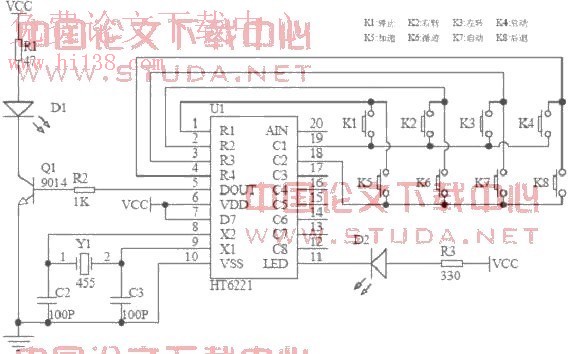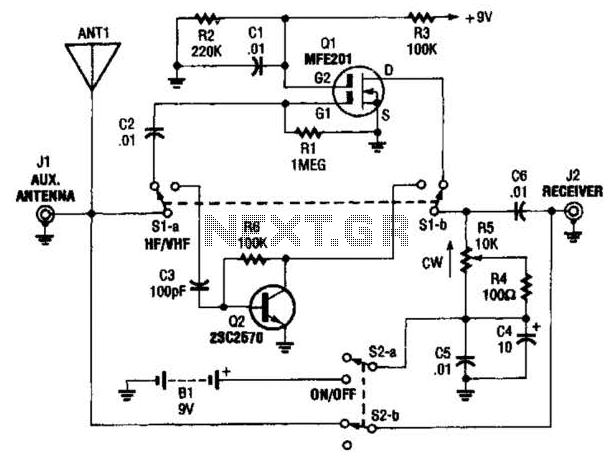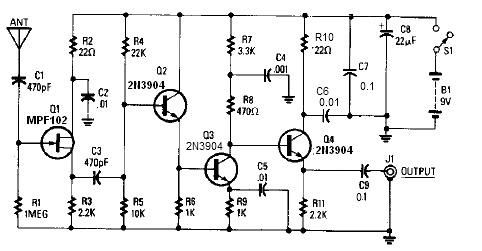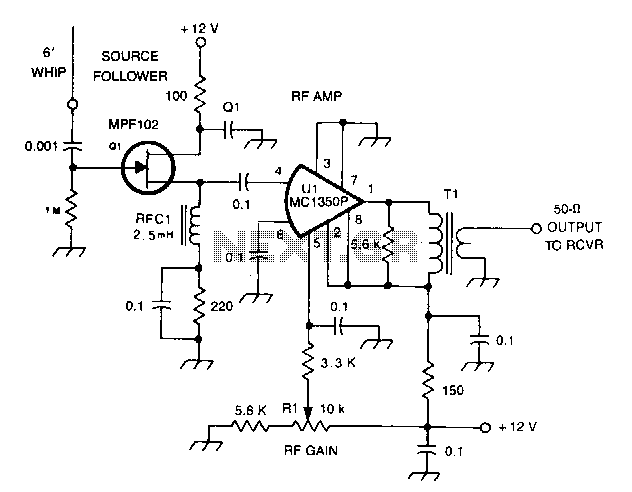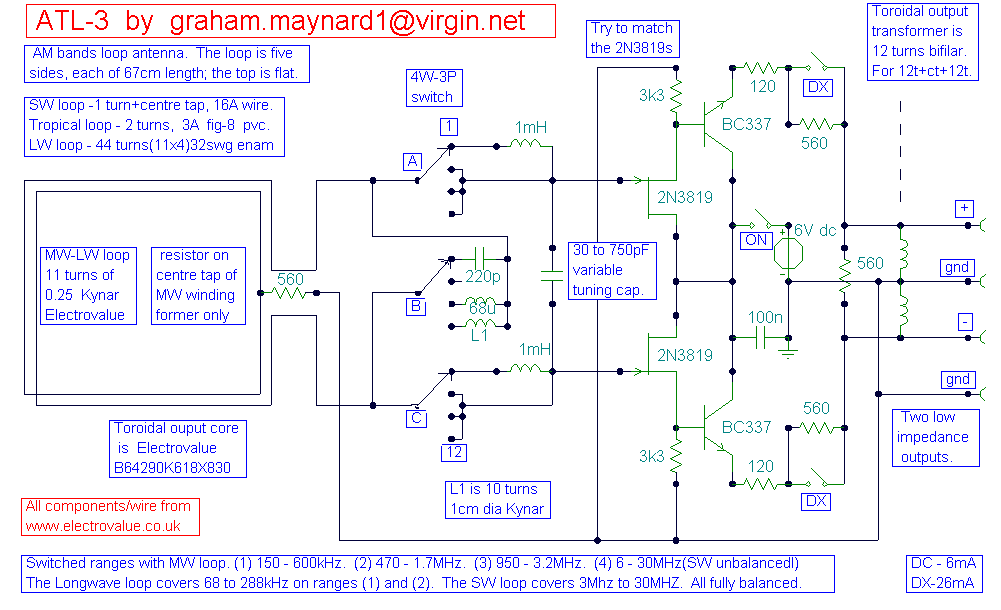
Active ferrite rod antenna for HF

The red connector is designated for an optional external antenna wire, while the black connector serves as the ground wire. The red wire is connected to the secondary winding, and the black wire is linked to the circuit ground plane. Additionally, two bypass capacitors (100nF) are soldered from different +9V locations to the ground plane to ensure stability in high-gain settings. The ferrite used is Amidon R61-050-300.
The circuit features a red connector intended for an optional external antenna, which enhances signal reception capabilities. This connector is linked to the secondary winding of the circuit, allowing for effective signal amplification. The black connector serves as the ground wire, establishing a common reference point for the circuit and ensuring proper operation.
To improve the circuit's stability, particularly under high-gain conditions, two bypass capacitors rated at 100nF are incorporated into the design. These capacitors are strategically soldered from various +9V supply points to the ground plane. Their purpose is to filter out noise and provide a stable voltage supply, which is crucial for maintaining performance in sensitive electronic applications.
The ferrite component utilized in this circuit is the Amidon R61-050-300. Ferrite beads are often employed to suppress high-frequency noise and improve signal integrity. This specific ferrite is selected based on its impedance characteristics at the operating frequencies of the circuit, contributing to the overall reliability and efficiency of the design.
The integration of these components forms a cohesive unit that enhances the functionality and performance of the electronic circuit, ensuring it meets the demands of various applications while maintaining stability and signal quality.The red connector is for an optional external antenna wire and the black connector is for a ground wire. The red is wired to secondary winding and the black is connected to the circuit ground plane. Additionally two by-pass capacitors (100n) are soldered from different +9V locations to the GND plane for stability in high gain setting.
The ferrite is Amidon R61-050-300. Click the pictures. 🔗 External reference
The circuit features a red connector intended for an optional external antenna, which enhances signal reception capabilities. This connector is linked to the secondary winding of the circuit, allowing for effective signal amplification. The black connector serves as the ground wire, establishing a common reference point for the circuit and ensuring proper operation.
To improve the circuit's stability, particularly under high-gain conditions, two bypass capacitors rated at 100nF are incorporated into the design. These capacitors are strategically soldered from various +9V supply points to the ground plane. Their purpose is to filter out noise and provide a stable voltage supply, which is crucial for maintaining performance in sensitive electronic applications.
The ferrite component utilized in this circuit is the Amidon R61-050-300. Ferrite beads are often employed to suppress high-frequency noise and improve signal integrity. This specific ferrite is selected based on its impedance characteristics at the operating frequencies of the circuit, contributing to the overall reliability and efficiency of the design.
The integration of these components forms a cohesive unit that enhances the functionality and performance of the electronic circuit, ensuring it meets the demands of various applications while maintaining stability and signal quality.The red connector is for an optional external antenna wire and the black connector is for a ground wire. The red is wired to secondary winding and the black is connected to the circuit ground plane. Additionally two by-pass capacitors (100n) are soldered from different +9V locations to the GND plane for stability in high gain setting.
The ferrite is Amidon R61-050-300. Click the pictures. 🔗 External reference
